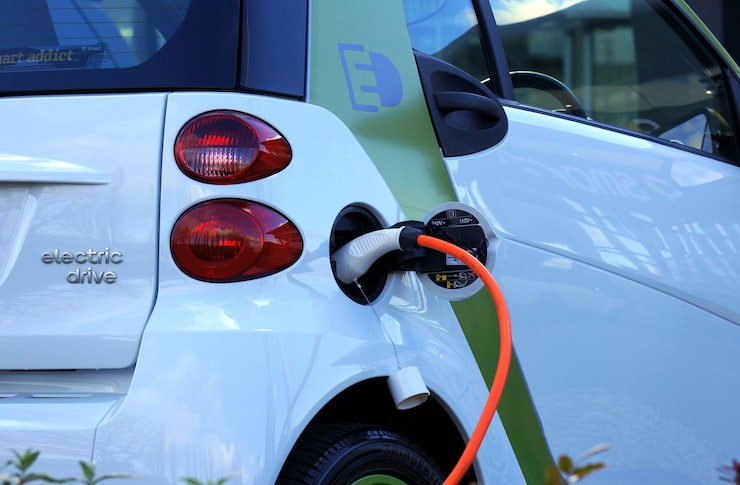Everything You Need To Know About Electric Cars In United Kingdom For 2025: Options and Prices
The electric vehicle landscape in the United Kingdom is undergoing significant transformation as we approach 2025. With the government's ambitious plan to end the sale of new petrol and diesel cars by 2030, electric vehicles (EVs) have moved from being a niche option to becoming a central part of the UK's automotive future. This shift is supported by expanding charging infrastructure, evolving battery technology, and an increasing variety of models entering the market. Understanding the current state and future projections of electric cars in the UK will help consumers make informed decisions as the industry continues to develop.

Electric Car Options Available in the UK Market for 2025
The UK electric vehicle market is expected to expand considerably by 2025, with manufacturers increasing their EV offerings across various segments. Entry-level models like the MG4 EV, Renault Zoe, and Nissan Leaf continue to provide accessible options for first-time EV buyers. The mid-range segment will feature models like the Volkswagen ID.3, Kia EV6, and Hyundai Ioniq 5, offering enhanced features and range capabilities. Premium options will include the BMW i4, Audi Q4 e-tron, and Mercedes EQE, catering to luxury car buyers. Additionally, several manufacturers are planning to launch new models specifically for the UK market in 2025, including electric SUVs, compact city cars, and performance vehicles designed to meet diverse consumer needs.
Understanding Electric Cars Prices and Cost Factors in 2025
Electric car pricing in the UK continues to evolve as manufacturing scales up and technology improves. While initial purchase costs typically remain higher than comparable internal combustion engine vehicles, this gap is narrowing. By 2025, industry analysts project that several models will approach price parity with their petrol counterparts. The total cost of ownership calculation favors electric vehicles when factoring in lower running costs, reduced maintenance requirements, and potential savings from various incentives. Battery costs, which represent approximately 30-40% of an EV’s cost, are projected to decrease by an additional 15-20% by 2025, potentially bringing down overall vehicle prices. Vehicle residual values are also stabilizing as the second-hand EV market becomes more established, improving the financial equation for prospective buyers.
Electric Cars In United Kingdom For 2025: Government Incentives and Policies
The UK government continues to implement policies aimed at increasing electric vehicle adoption. While the Plug-in Car Grant ended in 2022, several incentives remain in place for 2025. These include reduced Benefit-in-Kind tax rates for company car drivers, enhanced capital allowances for businesses purchasing electric vehicles, and the Zero Emission Vehicle mandate requiring manufacturers to achieve specific EV sales targets. Local authorities across the UK are implementing Low Emission Zones and Clean Air Zones, creating additional incentives for electric vehicle ownership. The government has also committed to continued investment in charging infrastructure, with targets to install 300,000 public chargers by 2030. Road tax advantages for zero-emission vehicles are expected to remain significant through 2025, though some adjustments may occur as the EV market share grows.
Comparing Electric Cars Battery Range and Charging Infrastructure
By 2025, the UK’s electric vehicle charging network is projected to expand substantially, addressing one of the primary concerns for potential EV adopters. The number of public charging points is expected to increase from approximately 42,000 in 2023 to over 100,000 by 2025. Rapid charging capabilities are improving, with next-generation chargers delivering up to 350kW, potentially adding 100 miles of range in under 10 minutes for compatible vehicles. Battery technology continues to advance, with solid-state batteries potentially entering early commercial applications by 2025, promising greater energy density and faster charging times. Average range capabilities for new electric vehicles are expected to reach approximately 300-350 miles for mid-range models by 2025, reducing range anxiety concerns. Home charging solutions are also evolving, with bidirectional charging technology allowing vehicles to store and return electricity to homes or the grid.
Electric Car Models and Pricing Comparison for 2025
Electric vehicle options in the UK market span various price points and specifications to meet diverse consumer needs. The table below provides a comparison of projected 2025 models across different segments:
| Model | Vehicle Type | Expected Range (WLTP) | Estimated Starting Price |
|---|---|---|---|
| MG4 EV | Compact Hatchback | 280 miles | £28,000 |
| Renault 5 E-Tech | Compact Hatchback | 250 miles | £30,000 |
| Kia EV6 | Crossover SUV | 320 miles | £42,000 |
| Hyundai Ioniq 6 | Sedan | 340 miles | £45,000 |
| VW ID.Buzz | MPV | 260 miles | £52,000 |
| Tesla Model Y | SUV | 330 miles | £44,000 |
| BMW i4 | Sport Sedan | 365 miles | £56,000 |
| Audi Q6 e-tron | Luxury SUV | 380 miles | £65,000 |
| Mercedes EQE | Luxury Sedan | 390 miles | £68,000 |
| Vauxhall Corsa Electric | Compact Hatchback | 240 miles | £29,000 |
Prices, rates, or cost estimates mentioned in this article are based on the latest available information but may change over time. Independent research is advised before making financial decisions.
Practical Considerations When Choosing an Electric Car
When selecting an electric vehicle, several practical factors warrant consideration beyond purchase price and range. Charging access remains a key consideration—prospective buyers should assess their home charging capabilities and local public charging infrastructure. Different vehicle types suit different usage patterns; city dwellers might prefer compact models with moderate range, while those undertaking regular long-distance journeys should prioritize vehicles with larger batteries and faster charging capabilities. Vehicle size, storage capacity, and passenger accommodation vary significantly across the EV market. Battery warranty terms differ between manufacturers, typically offering 8-10 years of coverage. Many electric vehicles now incorporate advanced driver assistance systems and connectivity features that enhance the ownership experience. Additionally, the servicing requirements and networks for electric vehicles continue to develop, with maintenance intervals typically longer than for conventional vehicles due to fewer moving parts.
The electric vehicle market in the United Kingdom is poised for substantial growth approaching 2025, offering consumers more options across all vehicle segments and price points. While initial purchase costs remain a consideration, the total ownership equation increasingly favors electric vehicles when accounting for running costs and residual values. Government policies continue to support the transition to electric mobility, though incentives are evolving as the market matures. Technological advancements in batteries and charging infrastructure are addressing previous limitations around range and charging times. For consumers considering an electric vehicle purchase by 2025, the expanding market will provide significantly more options than were available just a few years ago.




